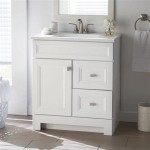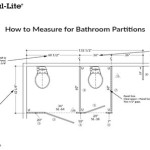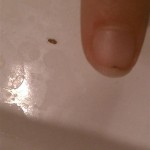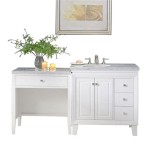American Standard Single Handle Bathroom Faucet Leaking: Troubleshooting and Repair
A leaking bathroom faucet is a common household problem that can lead to wasted water, increased water bills, and potential damage to surrounding surfaces. When the faucet in question is an American Standard single-handle bathroom faucet, a specific approach to troubleshooting and repair is necessary. This article will outline common causes of leaks in these faucets and provide step-by-step guidance on how to identify and resolve these issues. Addressing these leaks promptly can prevent more significant problems and maintain the efficiency of the plumbing system.
American Standard single-handle bathroom faucets are generally designed for durability and ease of use. However, like all mechanical devices, they are subject to wear and tear. Understanding the common failure points within the faucet mechanism is crucial for effective diagnosis and repair. Neglecting a seemingly minor leak can result in significant water wastage over time, therefore timely intervention is highly recommended.
Identifying the Leak Source
The first step in addressing a leaking American Standard single-handle faucet is to pinpoint the exact origin of the leak. Leaks can manifest in various locations, each indicating a different potential problem. Common leak locations include the base of the faucet, around the handle, from the spout, and beneath the sink. Accurate identification of the leak source is crucial to determining the appropriate repair strategy.
If the leak is observed at the base of the faucet, where it meets the sink deck, the problem usually lies with the O-rings or the faucet's mounting hardware. These components can degrade over time, creating gaps that allow water to seep through. A leak around the handle often points to a worn-out cartridge or stem O-rings. Spout leaks, particularly when the faucet is turned off, usually indicate a problem with the valve seat or cartridge itself. Finally, leaks beneath the sink, near the supply lines, suggest issues with the connections or the supply tubes themselves.
To effectively identify the leak's origin, thoroughly dry the area around the faucet and observe where the water first appears. Use a flashlight to examine hard-to-reach areas and look for any visible signs of damage or corrosion. Once the source is identified, the next step is to gather the necessary tools and prepare for the repair process.
Gathering Necessary Tools & Materials
Before commencing any repair work, it is essential to assemble the appropriate tools and materials. Having these items readily available will streamline the repair process and minimize potential delays. The specific tools required may vary depending on the faucet model and the nature of the leak, but a basic toolkit should include:
- Adjustable Wrench: For loosening and tightening nuts and fittings.
- Screwdrivers (Phillips and Flathead): Suitable for removing handles and accessing internal components.
- Allen Wrench Set: Often needed for removing set screws on the faucet handle.
- Plumbing Pliers: For gripping and manipulating pipes and fittings.
- Basin Wrench: Designed for reaching and loosening nuts in tight spaces beneath the sink.
- Penetrating Oil: To help loosen corroded or stuck parts.
- Clean Cloths or Towels: For wiping up water and cleaning components.
- Replacement Parts: Specifically, the O-rings, cartridge, valve seat, and any other components identified as the source of the leak. These parts should be compatible with the specific American Standard faucet model.
- Plumber's Grease: For lubricating O-rings and other moving parts.
- Safety Glasses: To protect eyes from debris.
Ensuring that the replacement parts are correct for the specific faucet model is paramount. Refer to the faucet's documentation or the American Standard website to identify the correct part numbers. Purchasing generic parts may lead to compatibility issues and a less effective repair. Furthermore, having a container or bucket to catch any remaining water in the pipes is recommended.
Step-by-Step Repair Procedures
Once the leak source has been identified and the necessary tools and materials have been gathered, the actual repair process can begin. The specific steps will vary depending on the location of the leak, but a general guide is outlined below.
Before starting any work, shut off the water supply to the faucet. This is typically done by closing the shut-off valves located beneath the sink. Turn on the faucet to release any residual water pressure.
Repairing a Leak at the Base of the Faucet:
- Disconnect the water supply lines from the faucet.
- Loosen the mounting nuts that secure the faucet to the sink. These are typically located beneath the sink. A basin wrench may be necessary for this step.
- Carefully lift the faucet from the sink deck.
- Inspect the O-rings and the mounting surface for any signs of damage or corrosion.
- Replace the O-rings with new ones, applying plumber's grease to ensure a proper seal.
- Thoroughly clean the mounting surface and remove any debris or corrosion.
- Reinstall the faucet onto the sink deck and tighten the mounting nuts securely.
- Reconnect the water supply lines.
- Turn on the water supply gradually and check for leaks.
Repairing a Leak Around the Handle:
- Locate and loosen the set screw on the faucet handle. This screw is often hidden beneath a decorative cap. An Allen wrench may be required.
- Remove the handle from the faucet body.
- Depending on the faucet model, you may need to remove a decorative escutcheon or cover plate.
- Examine the cartridge or stem O-rings for wear or damage.
- Carefully remove the cartridge or stem. Some cartridges may be held in place by a retaining clip or nut.
- Replace the O-rings on the cartridge or stem, applying plumber's grease.
- If the cartridge itself is damaged or worn, replace it with a new one.
- Reassemble the faucet in the reverse order, ensuring that all components are properly aligned.
- Turn on the water supply gradually and check for leaks.
Repairing a Spout Leak:
- Turn off the water supply to the faucet.
- Remove the handle following the steps outlined above.
- Remove the faucet cartridge. The specific method for removing the cartridge will vary depending on the faucet model. Consult the faucet's documentation for instructions.
- Inspect the valve seat for any damage or corrosion. The valve seat is the surface against which the cartridge seals.
- If the valve seat is removable, replace it with a new one. Some faucets have a non-removable valve seat, which may require replacing the entire faucet body if damaged.
- Replace the faucet cartridge with a new one.
- Reassemble the faucet in the reverse order.
- Turn on the water supply gradually and check for leaks.
Repairing a Leak Beneath the Sink:
- Identify the source of the leak. Common sources include the connections between the supply lines and the faucet, or the supply lines themselves.
- If the leak is at a connection, try tightening the nut connecting the supply line to the faucet or the shut-off valve. Use an adjustable wrench, but avoid overtightening, as this can damage the connection.
- If tightening the connection does not stop the leak, disconnect the supply line and inspect the fitting and the supply line for any damage.
- Replace the supply line if it is corroded or damaged.
- Apply Teflon tape to the threads of the fitting before reconnecting the supply line.
- Tighten the connection securely.
- Turn on the water supply gradually and check for leaks.
Throughout the repair process, it is crucial to exercise caution and avoid applying excessive force, which can damage the faucet or its components. If encountering difficulty or uncertainty at any point, consult a qualified plumber.
Preventative Maintenance
While addressing leaks as they occur is essential, implementing preventative maintenance measures can significantly reduce the likelihood of future problems. Regular inspection and proactive component replacement can extend the lifespan of the faucet and prevent costly repairs. Some key preventative maintenance practices include:
Regularly Inspecting for Leaks: Periodically check the faucet and surrounding areas for any signs of leaks, even minor ones. Addressing small leaks promptly can prevent them from escalating into larger, more damaging problems.
Lubricating Moving Parts: Applying plumber's grease to O-rings and other moving parts during routine maintenance can help to keep them functioning smoothly and prevent premature wear. This is especially important when replacing cartridges or O-rings.
Avoiding Abrasive Cleaners: Using harsh or abrasive cleaners on the faucet can damage the finish and accelerate the degradation of internal components. Opt for mild, non-abrasive cleaners specifically designed for bathroom fixtures.
Replacing Worn Components: Consider replacing cartridges and O-rings proactively, especially if the faucet is heavily used or if the water supply is known to contain high levels of minerals. Regularly scheduled maintenance can help to prevent leaks before they occur.
Controlling Water Pressure: Excessive water pressure can put undue stress on the faucet's internal components, leading to premature wear and leaks. If the water pressure in the home is consistently high, consider installing a pressure regulator.
By incorporating these preventative maintenance practices into a routine household maintenance schedule, homeowners can significantly reduce the risk of leaks and extend the lifespan of their American Standard single-handle bathroom faucet.
In summary, addressing an American Standard single-handle bathroom faucet leak involves careful identification of the leak's source, gathering the appropriate tools and materials, executing the necessary repair procedures, and implementing preventative maintenance measures. By following these steps, homeowners can effectively resolve common leak issues and maintain the efficiency and longevity of their faucets.

How To Fix A Dripping American Standard Bathroom Faucet

American Standard Rumson Single Hole Handle Bathroom Faucet In Brushed Nickel 7417101 295 The Home Depot

American Standard Repair Kit For Old Single Handle Shower Faucets Noel S Plumbing Supply

American Standard Rumson Single Hole Handle Bathroom Faucet In Brushed Nickel 7417101 295 The Home Depot

How To Replace A Bathroom Faucet

Fern Single Hole Handle Bathroom Faucet 1 2 Gpm 4 5 L Min With Lever

American Standard 2175 205 002 Colony Single Control Bathroom Faucet Polished Chrome Faucetdepot Com

P136lf Single Handle Bathroom Faucet

Repair Parts For American Standard S Aquarian Kitchen Faucet

American Standard Rumson Single Hole Handle Bathroom Faucet In Brushed Nickel 7417101 295 The Home Depot
Related Posts







